Most beginners to yoga wonder how long to hold yoga poses, and this is a legitimate question. Generally, people start practicing yoga because it is a healthy, comforting, and peaceful practice for both the mind and the body. You will feel relaxed and light as all your worries have gone away.
So, how long to hold yoga poses? In general, you can hold yoga poses for anywhere between a few seconds (one or two breaths) up to five minutes. It all depends on your body and how you feel on a specific day. If you are a beginner, you can begin to hold for 5- 10 seconds. Slowly increase your time. Later, when you become comfortable with each yoga posture, you can go up to 1 min or more.
More importantly, listening closely to your body is one of the best ways to determine how long to hold yoga poses. Whenever you feel discomfort or fatigue, it is time to stop each pose.
Also, remember that you are not competing with anyone else; yoga is all about taking time out of your day to relax and reconnect with your body and mind. Everyone has their limit to doing yoga poses, so make sure to know the right time, especially when you are a beginner.
Read on to find out all the benefits of holding a yoga pose longer, along with the type of Yoga pose to practice every day and how long you should hold each pose. You might also enjoy reading: Can You Really Sleep After Yoga? (Let’s Find Out)
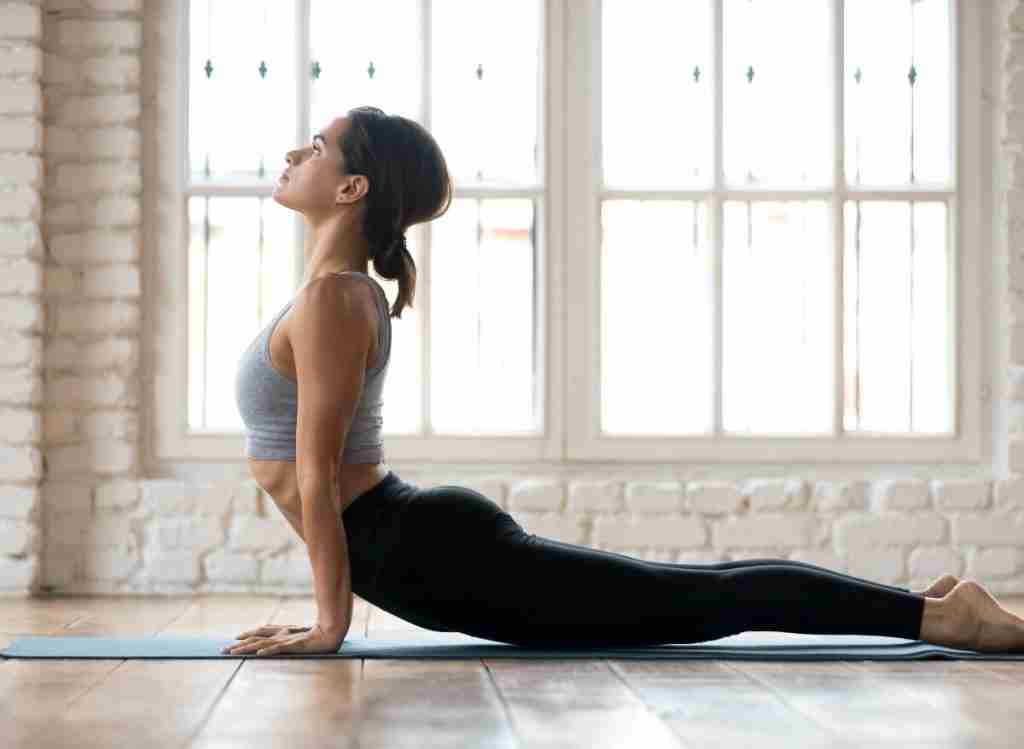
Table of Contents
How Long Should Really You Hold Each Yoga Pose?
How long to hold yoga poses entirely depends on you, your body type, health, fitness level, age, and culture. Krishnamacharya, the grandfather of modern yoga, taught that each yoga pose should be practiced dynamically with the breath first, making each breath as long and smooth as possible. You can hold the pose statically (if you can), keeping the same breath ratio as established in the movement.
Here are a few things to keep in mind:
- Ensure you are breathing smoothly and steadily, expanding the chest and allowing the diaphragm to descend on inhale, and using the body’s base to contract upwards on exhale.
- Hold the pose no longer than you can continue with a smooth and full breath. When your breathing becomes gasp or shallow or through the mouth, you no longer practice yoga; you are working out.
- However, if you breathe smoothly and thoroughly, you can hold the pose for anywhere between 5 to 15 breaths.
- Most yoga instructors advise against practicing with long poses, as it can damage the muscles and ligaments over time and might cause liability in the system.
- Most yoga instructors believe that using the breath is a more effective way to smooth the nervous system than practicing extended holds in a few poses.
- Yoga poses can be done in seconds to five minutes, depending on the strength of the person.
- Practicing yoga is an art, and your poses time will depend on how fit you feel every day. Some days you will have this great energy and enthusiasm, but sometimes you might feel low.
Here are a few tips for better practice:
- Ensure you are in a quiet room while performing your yoga.
- Listen to your heartbeat and avoid thinking about anything.
- Just focus on yourself and perform each pose with concentration.
- As soon as you feel fatigued, relax and stop the pose.
- Breathe in and out for a minute before you perform the next step.
Factors That Can Affect Your Yoga Pose:
Several factors can affect your yoga pose. Some of them are as follows:
- Your flexibility level: If you are a beginner, you might not be that much flexible compared to an experienced yoga practitioner. So, you might find it challenging to pose for a long time.
- How intense is your yoga practice: Another factor is the intensity of your yoga poses. If they are difficult, it will take time for you to pose them easily and at the right angle.
- What type of yoga are you practicing? It also involves the type of yoga you are practicing, like it could be restorative, vinyasa, or any other form. Every yoga type has its own time and performing angles that can require practice.
- The time of day you do yoga: Your practice time also matters, as in the daytime, you are fresh, and beginners should always choose this time. The nighttime is for your relaxation, and if you choose a hard level of exercise, then this is going to be difficult for you.
- Are you an experienced or a beginner yoga practitioner? Your experience or the time since you started yoga is a major factor here. It requires years of experience for some people to pose some yoga types for a longer time.
- Whether you can tolerate pain or not: Your pain tolerance is another factor. Not all but some of the yoga types will lead to sore muscles at the start. Consider it like exercise. When you do it after so much time, you get cramps.
See also: Meditation Vs. Yoga: Which One Comes First? (Find out now!)
How Many Times Should You Repeat a Yoga Pose?
There are no minimum or maximum requirements for repeating the poses. In general, you can pick 10 poses at the start and repeat them 1 to 2 times. Now, it all depends upon your strength and experience of yoga.
How long you should hold each yoga pose depends on your goals.
- If your goal is to practice maintaining health and flexibility, you might only need to spend about 10 to 30 seconds in each pose.
- If your goal is to build strength and muscle definition, you can hold each pose for a couple of minutes (if you can)
- If your goal is to build endurance or challenge yourself, try to hold each pose longer. However, ensure you keep track of time not to overdo it.
See also: 6 Must-Do Things After Your Yoga Class.
What Yoga Pose Should You Do Every Day, And How Long Should You Hold Each?
If you are an experienced yogi, you can take your yoga poses for 5 to 20 minutes. Listen to your body and stop whenever you feel tired. For beginners, the time is generally seconds to 5 minutes only.
The time you hold each posture also depends on the style of yoga you practice. You can adjust each type to suit your needs.
Yin Yoga: Spend About 3 to 7 minutes per pose
Yin yoga focuses on the soft tissues in your body, including ligaments and tendons, not just the muscles. And its practice is based on maintaining poses for more extended periods, generally between three to five minutes.
Each pose’s length lets you move deeper into them while also allowing sufficient time for adaptation by increasing circulation through passive stretching, which helps relax your muscles.

Ashtanga Yoga: For about 5 breaths per pose
With Ashtanga yoga, you hold each posture for about five breaths. If you are a beginner, avoid pushing yourself excessively to prevent injuries and discomfort.
See also: Hot Yoga Vs. Regular Yoga: What Are The Differences?
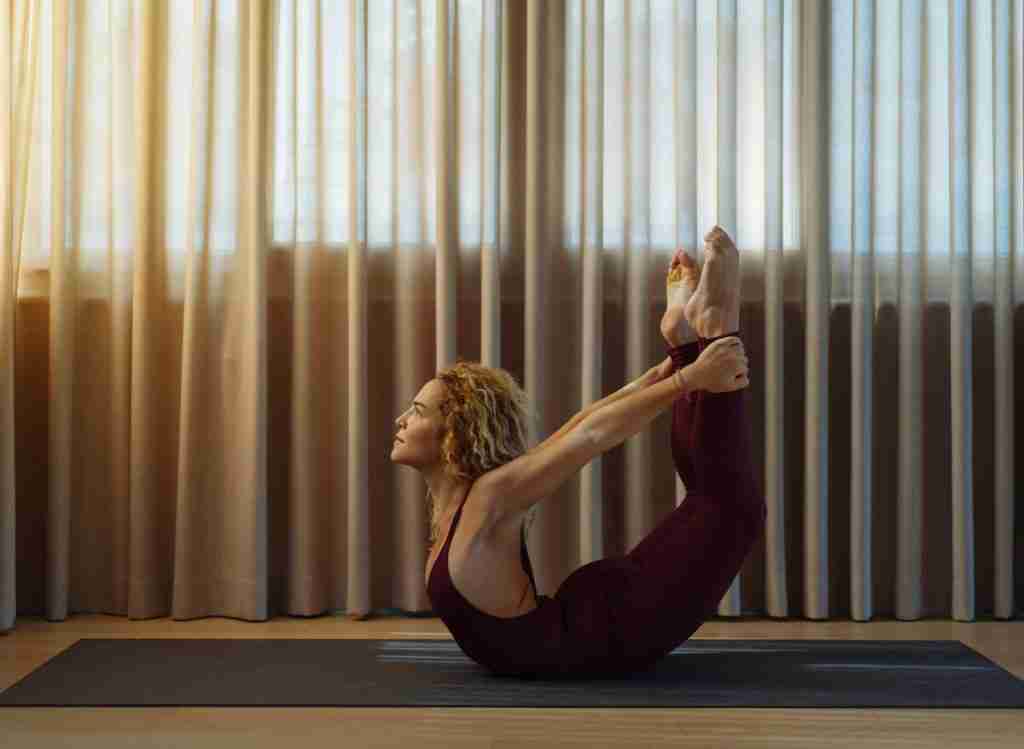
Vinyasa Flow Yoga: Hold each for about 1 to 5 breaths for each pose
With Vinyasa Flow Yoga, aim to hold postures comfortably without losing focus or energy during your practice, particularly if you join a vinyasa flow class.
Depending on your level, Vinyasa Flow class classes generally last about an hour and include a steady pace with little rest or repetition.

Restorative Yoga: For about 5 – 20 minutes (if you can)
Like Vinyasa Flow Yoga, ensure you can hold poses comfortably while maintaining focus and energy.
As the name suggests, restorative Yoga restores your body and mind and gives you time to relax fully.

Power Yoga: for about 1 – 6 breaths per pose
Power Yoga is excellent, particularly if you want to increase flexibility, strength, and endurance.
With Power Yoga, it is essential that you do not hold poses too long as it might reduce its benefits.
Instead, you should focus on breathing deeply through each posture to allow energy to flow freely through both body and mind.
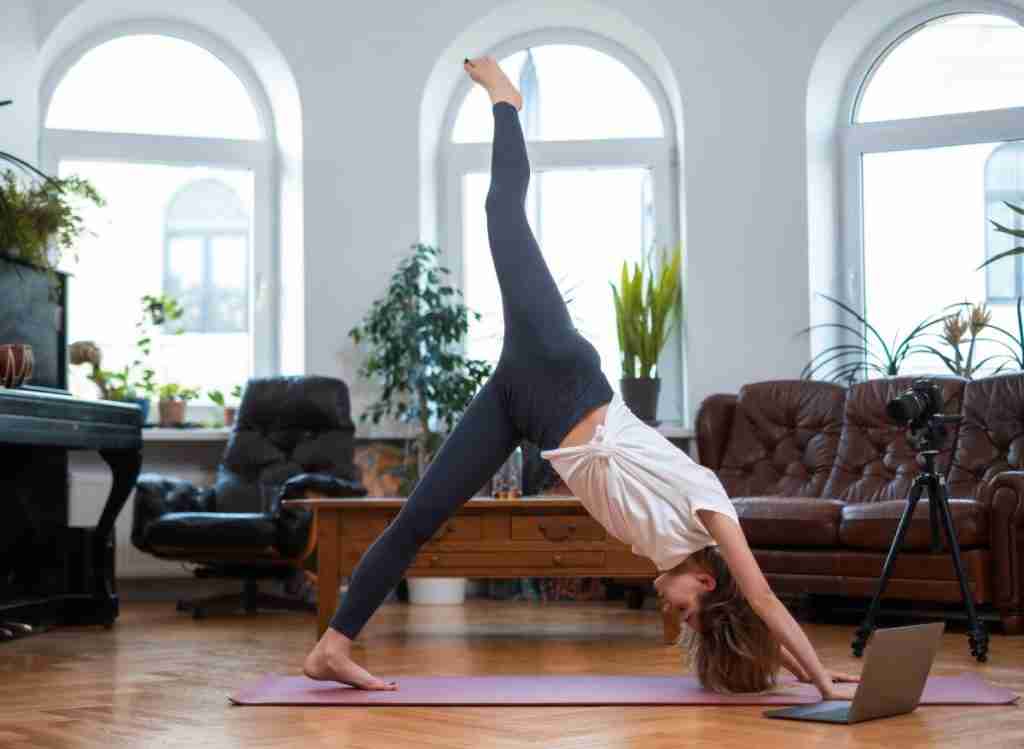
Bikram Yoga: for 90 seconds or even more per pose
Bikram Yoga (AKA Hot Yoga) is excellent if you want to improve your cardiovascular fitness and endurance levels.
Bikram Yoga is highly intense and focuses on perfect form over speed, meaning you will need plenty of time to hold each pose before moving on to the next one.

See also: 13 Yoga Postures That Help With Gas.
Iyengar Yoga: for about 5 – 30 minutes, depending on the yoga pose you are performing.
Iyengar yoga uses props, including straps, blocks, and blankets, to help you achieve postures more efficiently.
Generally, with Iyengar Yoga, you should hold poses longer using yoga props, with fewer repetitions, usually to prevent overstretching or injury. See also: Top 7 Must-Have Yoga Props and How to Use Them.
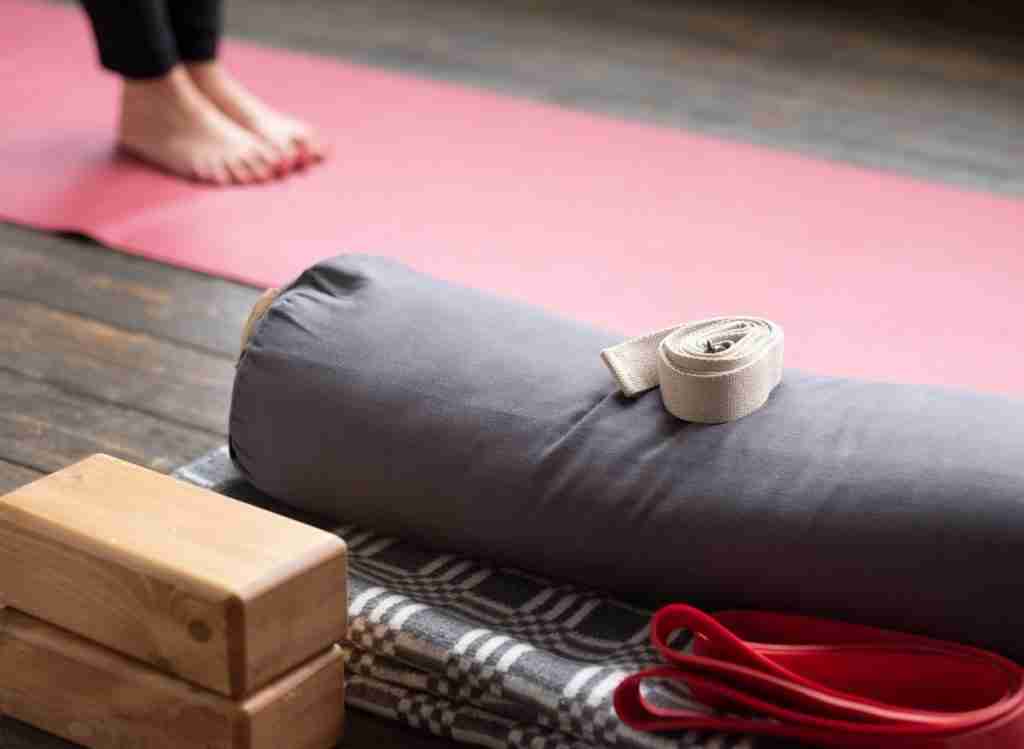
Sivananda Yoga: for about 1 – 3 minutes per posture, also depending on the pose.
Sivananda Yoga focuses primarily on taking slow deep breaths during each effective yoga pose, particularly if you want a calmer workout. Generally, Sivananda Yoga is ideal before bedtime since it helps promote better sleep patterns.
Holding yoga poses varies wildly from person to person when it comes to practicing Sivananda Yoga.

Hatha Yoga: for about 30 seconds to one minute per pose
With Hatha Yoga, hold each pose between 30 seconds to one minute before moving on to the next one with little or no rest periods in-between unless instructed by your teacher.
It might seem very short to you, but you will reap all the benefits quickly with regular practice. Be patient and kind to yourself.
See also: Best Fitness Trackers For a Healthier Yoga Practice.
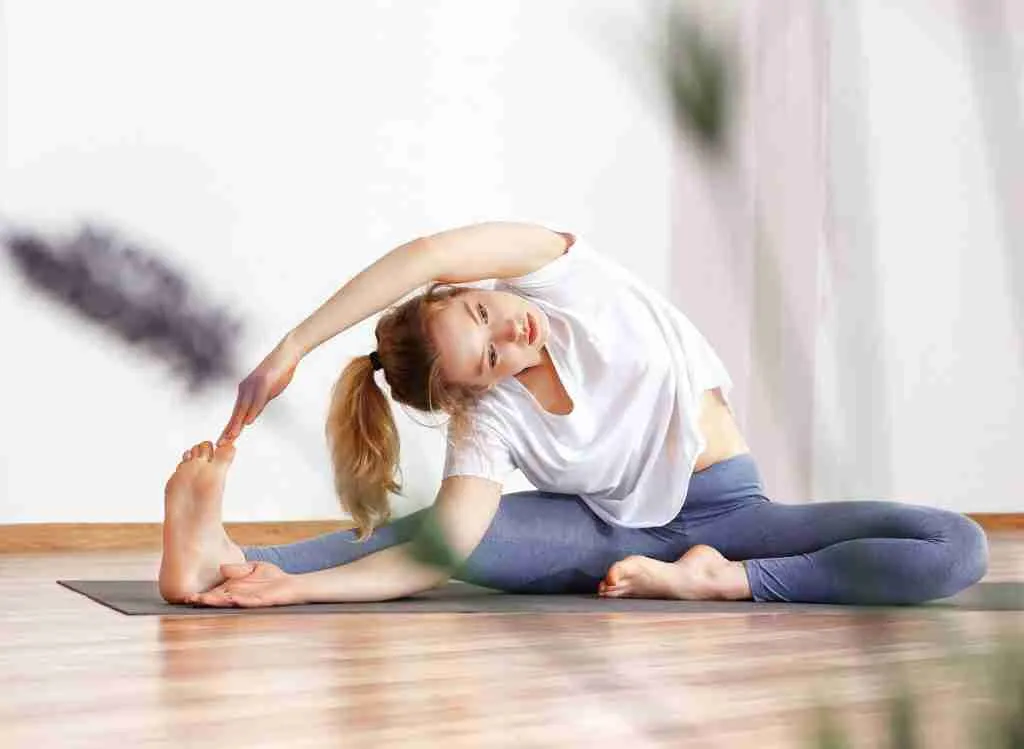
Benefits of Holding Yoga Pose for a Long Time
There are several ways to practice yoga. Generally, how you hold your yoga poses depends on your level of practice and how your feel on a particular day.
- Some days you may want to do a quick yoga routine to get your day began in which you hold each asana (pose) for just a single breath.
- Other times, you might want to hold a pose for about 5 minutes, which is generally expected in restorative yoga styles, including Yin Yoga.
Here are a few benefits of holding yoga poses longer:
1- Relieves Muscle Soreness
Long pose time in yoga helps in relieving the soreness of the muscles. Some people, when getting cramps from exercise or are too busy with their hectic routine, choose yoga as the final solution.
Yoga is not just for a healthy body or weight loss, but it also helps to keep your mind and muscles relaxed. You should feel alive and strong after doing your favorite yoga poses.
Several studies showed yoga helps relieve pain and soreness.
2- A Clear And Fresh Mind
Starting your day with yoga helps in a clear and fresh mind. You will feel great inner energy by which you can complete your daily goals of life and work with dedication and concentration.
You won’t feel tensed or worried and can enjoy every moment of your life.
3- Build endurance
There is no denying that a workout like yoga builds endurance in your body. More endurance means more strength which will allow your body to balance and pose for much longer.
You will see a great progression in your workouts if you do yoga.
4- Stability and flexibility
If you can easily stay in a pose for a long time in yoga, then you can maintain stability. Let’s take the example here of breathing. A lot of people have problems breathing during workouts which slowly goes away when people develop their strength.
It is the same with yoga which will help your body to become strong and healthy.
5- Relieves tension
Yoga is one of the best workout that is a therapy around the world for people who are going through anxiety, stress, and depression. There is no denying that we all face a lot of hurdles in our life, and some of us do not have the stamina to cope with them.
Well, there is no need to worry, as yoga will help you to stay calm and release your tension.
Yoga can enhance daily function among people with fibromyalgia and osteoporosis-related spine curvature. In addition, doing yoga improves mood and psychosocial well-being, according to studies.
6- Weight loss
Well, we all know that yoga is popular for weight loss. But, it is not magic as you have to be on a diet avoiding carbs. You cannot expect weight loss with the help of yoga while you are eating junk food.
Practicing yoga may be helpful for weight loss, regardless of the style of yoga, found a study.
Start eating healthy, and you will see a great change in your body and mood.
See also: Yoga Nidra Vs. Meditation: Which One is Best For You?
Wrapping Up
When it comes to yoga practice, cultivating a personal approach is valuable. Ask yourself: what are you trying to feel and achieve with each pose posture?
More importantly, focus on performing various poses and stretching to make your body feel good and give a sense of relaxation and calmness every day.


